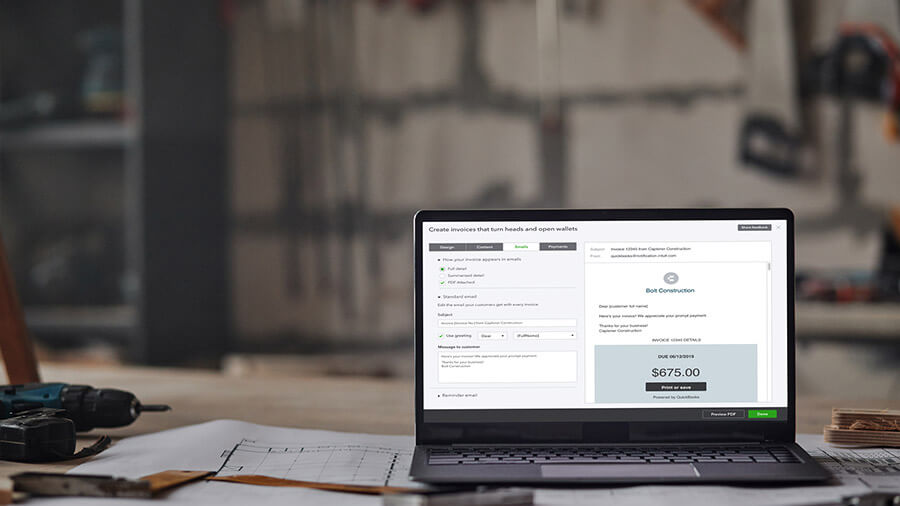How to use payment terms
Payment terms are essential when negotiating a contract, and an effective set of payment terms should benefit both parties. They should maximise how quickly your clients pay you and minimise inconvenience for your customer.
To maintain a healthy business, remember that your payment terms should match your business plans. Align your net payment terms based on your typical sales lifecycle. Discuss payment terms with your clients upfront and always include your payment terms on invoices.
Prepayment
You can require customers to pay in advance for services. Advance billing can improve your cash flow and reduce the risk of losing money. Getting paid in advance can be a major benefit for businesses—many companies sweeten the deal by offering discounts to customers who pay in full upfront.
Example: If you have an event photography business, you may want to avoid the risk of cancellation by requiring full payment (or a deposit—see below) before the event takes place.
50% upfront
You may choose to require a partial payment of 50% of the total cost of a customer’s purchase. Partial payments can provide the working capital you may need to complete a customer’s project. They may also benefit your customers by breaking up their costs into smaller payments. Smaller payments for your customers can benefit your business as well, in the form of increased sales and higher order value.
Example: If you operate a wedding venue, a 50% deposit may also be a worthwhile compromise if a customer is unable or unwilling to pay in full upfront. If you choose these terms, be sure to define when you’ll receive the remaining 50%.
Installment agreements
You can also choose to accept partial payments, or installments, through payment plans based on project milestones or time. Some companies split up big projects into milestones, and the customer pays upon each milestone. You may base installment agreements on time—every three months, for example—or upon delivering a specific part of the project.
Installment agreements are similar to line of credit payment terms, except they’re cash-based.
Example: You may choose to divide the customer’s total cost into a series of smaller monthly payments. Services like Afterpay now make this feasible for vendors such as Sunglass Hut, where customers can buy something and pay it off over several months.
Lines of credit
Line of credit payment terms offer buyers credit toward products and services. Customers can then repay the balance on the agreed payment schedule. Offering credit through your business comes with some risks, however, as the customer could default. Larger organisations typically use this type of customer financing, as opposed to small businesses.
Example: A construction company that has won a big contract may not have the means to perform the job upfront until payment is received. However, by receiving a line of credit from their creditor (a bank), they can continuously use this credit to complete their project and repay as they receive payment from the customer.
Immediate payment
Immediate payment, or payment due upon receipt, refers to a transaction for which payment is due as soon as you deliver goods or services. Examples of immediate payment terms include cash on delivery (COD) or payable upon receipt. You may add into the contract that you have the right to repossess goods if the customer does not provide immediate payment.
Example: A pizza delivery company often asks for cash on delivery as soon as the product is received by the customer.
Net 7, 10, 15, 30, 60, or 90
These terms refer to the number of days in which a payment is due. For instance, net 30 (or n30) means that a buyer must settle their account within 30 days of the date listed on the invoice. Using net 30 terms, if you date your invoice March 9, clients are responsible for submitting payment before April 8.
Choosing net payment terms may inconvenience you as a business owner, as you'll have finished the project or delivered the product without receiving income. However, customers may prefer these terms. Try to find a period that works for both you and your client.
Example: Many freelancers work on net 30 terms. This is where their clients only run payroll once a month therefore anything completed in the past month will be paid in the coming 30 days.
Subscriptions and retainers
Subscription and retainer payment terms require customers to pay regularly, such as monthly or annually. Typically, businesses on retainer agreements issue invoices to clients on a recurring basis. Automating invoicing for recurring payments can help.
Example: Retainers are common with lawyers, for instance, where they require a retainer prior to beginning work and automatically invoice a set amount each month.
Early payment
You can also provide customers with an incentive to pay early. For example, consider offering a 5% discount if the customer pays the total balance in full before the due date. Early payments are a win-win—customers receive a discount on your goods or services, and you’ll have enough capital to complete the project.
Example: Early payment benefits can be great for wholesalers, who are looking to (and can afford to) take a small pay cut in order to receive cash flow all at once.



